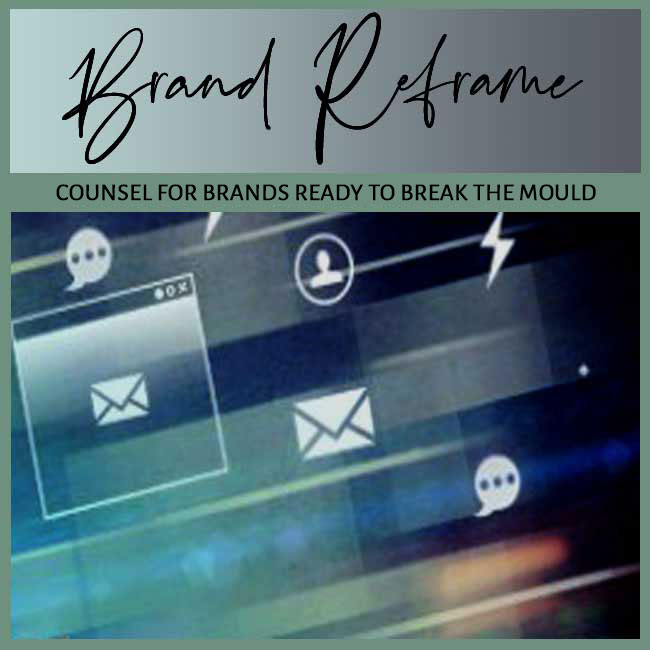
FOCUS: BRAND LAUNCH FAILURE | AUDIENCE: INVESTORS IN SLUGGISH BRANDS
BY: SHOBHA PONNAPPA | BRAND BREAKTHROUGH STRATEGIST | 45 YEARS | 125+ CLIENTS
I answer 6 tough questions about why so many newly launched brands fade fast … and how indistinct messaging plays a big role.
I’ve worked with investor-backed brands that had the right product, sleek design, and ample marketing budgets … yet made no mark. The reason? Their messaging sounded generic, templated, and forgettable. In this post, I unpack the six most telling questions I’m asked when brand launches stall … not from failure, but from a lack of distinction.
It’s surprisingly common. A brand might be seen in ads, digital campaigns, and packaging … but still leave no imprint on the customer’s mind. If the core message feels borrowed from industry clichés, the brain simply skips over it.
Many launch teams focus so hard on sounding credible or polished, they forget to sound distinct. But memorability requires friction … an angle, a tone, or a turn of phrase that makes a reader stop and think. Without that, visibility becomes white noise.
Legacy brands at least carry residual equity. But new brands only have their first impression. If their message sounds like “We bring quality and care to everyday wellness” or “Built to empower modern lives” … they may be saying nothing at all.
Templated phrases are safe, but they fail to anchor the brand in a mental category. Without concrete stakes or strong personality, the customer won’t remember who said what. And in a launch scenario, that means invisibility from day one.
Many founders face this … especially in complex or emerging categories. But vagueness isn’t the answer. In fact, the more technical or nuanced the product, the greater the need for sharp, resonant messaging. If the value isn’t clear in language, it won’t be clear in perception. Customers shouldn’t have to decode your offer … it should strike them intuitively.
The real challenge is not just defining the USP, but translating it into something emotionally sticky. You’re not trying to simplify the offer … you’re trying to make it land faster. A metaphor, a mental shortcut, or a bold reframe can do more than technical accuracy. Launch-stage brands must seduce first, explain later … otherwise, they lose precious seconds of audience attention.
Absolutely … but speed and boldness matter. I’ve worked with brands where the initial launch message landed like a whisper. But once we reframed the promise into something stickier and more differentiated, traction picked up within weeks. The problem isn’t always reach … it’s resonance. A well-timed pivot in messaging can signal renewed clarity, making even a lukewarm brand feel reawakened.
That said, recovery requires more than tweaks. You can’t just polish a flat message … you have to reimagine it. This often means letting go of founder-led phrasing or investor assumptions about what “should” work. If the first message flops, you don’t need damage control … you need a fresh angle that makes people care. And that care begins with relevance, vividness, and emotional specificity.
Because messaging is often seen as cosmetic, not strategic. Product features and business models feel like real assets … but messaging is what turns those assets into audience attention. Investors focus on funding, market fit, and scalability … but if the brand’s promise doesn’t land, none of that matters. Launch momentum is not built on function alone … it’s built on friction, intrigue, and emotional pull.
I’ve seen many pitch decks describe brands as “revolutionary” … only to hit the market with generic taglines and safe phrasing. Messaging isn’t fluff … it’s the difference between recall and irrelevance. Investors who treat it as an afterthought often find themselves puzzled when a brand with great bones simply disappears into the noise.
Ask this simple question: If we removed our logo, could a competitor claim this exact line? If the answer is yes … your messaging lacks ownability. This single test has saved several launch-stage brands I’ve worked with from entering the market invisible. You must own a voice, not just a space. Messaging should reveal how the brand thinks, not just what it offers.
It also helps to run your message past real-world proxies … early adopters, friendly critics, or even competitors. Do they pause? Do they smile? Do they repeat it back? If not, the line might be safe … but not sticky. Remember, a strong message isn’t one the brand loves to say … it’s one the audience loves to repeat.
If these questions feel uncomfortably close to a portfolio brand you’ve backed, it’s likely the message … not the model … is the issue. A flat first impression doesn’t mean the product is doomed. But it does mean urgent reframing is needed.
If you’re brand owner or manager seeking stronger brand performance, this FAQ Insight Post I wrote could interest you: “FAQs: When Familiar Brands Fade from Memory.“
And if you’re a solo expert looking to sharpen traction, this FAQ Insight Post I worked on may resonate: “FAQs: Why First Launches Of Expert Brands Often Fall Flat.“

"One BIG IDEA can turn brand stagnation into unstoppable movement. Spots are limited each week ... book your breakthrough session now."
Shobha Ponnappa
More Breakthrough Ideas … Case Studies & FAQs … from the Brand Launch Failure Category
Case Studies
FAQ Insights
Smart insights, real-world frameworks, and idea-driven clarity – designed to help brands move.
Get my fortnightly Brand Reframe newsletter. Smart insights, distilled thinking, and focused momentum to help your brand lead.

Get my free AI strategy guide. Smart prompts, sharper briefs, and practical ways to make AI support your brand momentum.

Just fill in the form to join. Get my newsletter and the guide shown alongside, all with several game-changing tips.